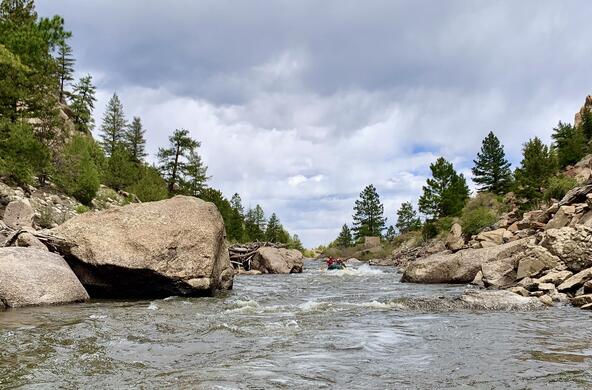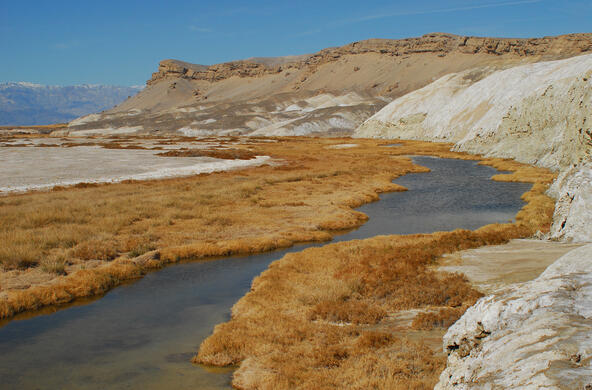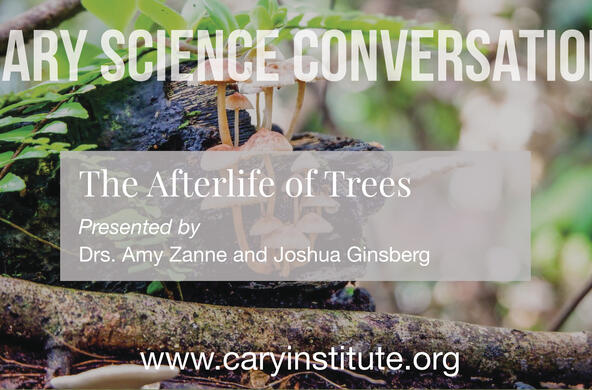With increasing interest in the role of natural solutions to climate change, especially the uptake of carbon dioxide by vegetation, we need to recognize what constitutes a real carbon “sink”—a process that removes carbon dioxide from the atmosphere and stores it for long periods of time.
Trees remove a lot of carbon dioxide from the atmosphere, but their own metabolism converts some of the carbohydrate they produce back to carbon dioxide, which is returned to the atmosphere. Only a portion (50%) of the carbohydrate they produce is converted into cellulose and lignin that are stored in leaves and wood. Some of those plant parts are dropped to the soil each year, where decomposition by microbes returns more carbon dioxide to the atmosphere. At year’s end, only about 10-20% of the carbon that was first taken up from the atmosphere is retained in wood and an even smaller amount (<1%) in soil humus. The percentages are higher in younger forests, but even mature forests store a small amount of carbon.
Grasslands and semi-arid shrublands do not provide large sinks for atmospheric carbon dioxide, either because they harbor no long-lived tissues or, as in California, are subject to recurrent wildfires.
Of course, what is stored in wood may not persist as a long-term sink for carbon. Fires, insect attack, and harvest can reduce well-statured forests, minimizing long-term storage. Electric power plants fired by wood pellets, effectively negate any carbon uptake that might be credited to forest growth. Forests need protection if we expect them to accrue carbon. Unless harvested wood goes into products of longevity—houses, furniture, coffins—the carbon contained in the forest is returned to the atmosphere.
Humans have a long history of impact on the vegetation cover of the land, perhaps extending to 3000 years ago. Recent observations of “greening” of the Earth do not necessarily mean that we are seeing lots of additional carbon storage on land. Some of the increased greenness seen in satellite images may stem from the fertilization effect of rising CO2 in Earth’s atmosphere. Some may stem from more intensive land management, including irrigation, in semiarid regions. And some may derive from reforestation in previously harvested areas. But, when it comes to evaluating whether an enhanced sink for carbon in vegetation is real and meaningful in comparison to annual emissions from fossil fuel combustion, caution is needed and forests are a likely place to look.
See: The missing sink
References
ArchaeoGLOBE project. 2019. Archaeological assessment reveals Earth’s early transformation through land use. Science 365: 897-902.
Bastin, J.-F., et al. 2019. The global tree restoration potential. Science 365: 76-79.
Fei, S., R.S. Morin, C.M. Oswalt, and A.M. Liebhold. 2019. Biomass losses resulting from insect and disease invasions in US forests. Proceedings of the National Academy of Sciences 116: 17371-17376.
Gu, H., C. A. Williams, N. Hasler and Y. Zhou. 2019. The carbon balance of the southeastern U.S. forest sector as driven by recent disturbance trends. Journal of Geophysical Research Biogeosciences doi: 10.1029/2018JG004841
Song, X-P., and 6 others. 2018. Global land change from 1982 to 2016. Nature 560: 639-643.
Zhang, Y., C. Song, L.E. Band, and G. Sun. 2019. No proportional increase of terrestrial gross carbon sequestration from the greening Earth. Journal of Geophysical Research Biogeosciences doi: 10.1029/2018JG004917








